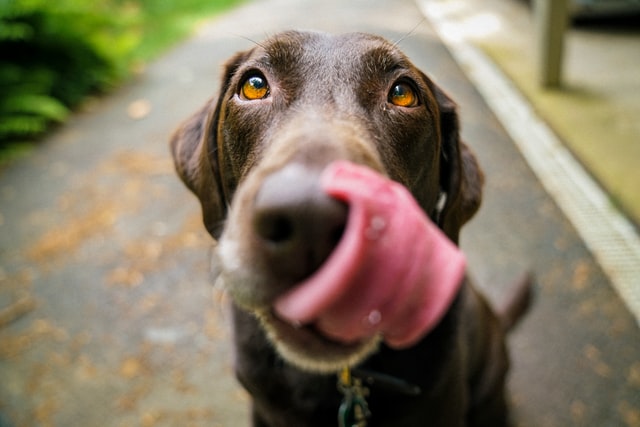
Can my dog be friends with a wild rabbit? There is no reason that they could not get along if they both choose to. The decision would mainly be the dog’s decision and what is considered to be their ‘prey instinct’.
Contents
In order for a friendship between the two, your dog will have to have little or no desire to chase after and kill wild animals. These low prey type dogs are very gentle with other animals also, indoors and outdoors.
If the rabbit is a wild rabbit, this could subject your dog to a couple of different possible infections or parasites from the rabbit.
Tularemia

Tularemia is a bacterial infection that a dog is likely to get if he or she has eaten an infected wild rabbit. Tularemia can also affect other animals such as rodents and hares. It can also affect humans, as well as other wild or domesticated animals. This does include dogs.
Hawaii is the only State in the United States that has not reported any cases of Tularemia.
How Do They Catch Tularemia

Although it is not common for a dog to have Tularemia, it is possible that they can catch it. There are a few different ways this can happen.
Ingesting an infected animal. This would mean that the dog still has a prey instinct and would have likely caught an infected hare or infected rabbit. There may have been another rodent the dog captured and ingested that was infected also.
The dog may have consumed some infected water or other food that was contaminated with Tularemia.
The infected dog may have been bitten by an infected insect such as a flea, tick or mosquito.
The dog could be infected with Tularemia by skin-to-skin contact with an infected wild rabbit, hare or another rodent.
It is also possible that the dog may have inhaled some aerosolized bacteria of the Tularemia.
Veterinarians admit that they see a higher than average rate of Tularemia infections during the summer months when the tick population and also the deer fly population are on the rise.
There is also the winter hunting season for rabbits, dogs are likely to come into contact with an infected rabbit more often at this time, as well as other infected wildlife.
Symptoms of Tularemia

A normally healthy dog that comes into contact with Tularemia will likely show no to very little sign of being infected. However, dogs that are immunocompromised will show more symptoms plus it will be at a quicker rate.
Some of the symptoms that will be noticeable will include, but are not limited to:
- Dehydration
- Sudden High fever
- Stomach pains
- White patches on the tongue
- Skin ulcers
- Lethargy
- Organ Failure
- Swollen lymph nodes
- Loss of Appetite
- Jaundice
- Throat infection
- Enlarged Spleen or liver
It is extremely important if you notice any of these issues call your vet and take your dog in for an appointment immediately. Quick diagnosis and fast treatment are highly important when it comes to dogs infected with Tularemia.
Keep in mind that many of these symptoms could also fit under a number of other various health issues for your dog. Either way, book an appointment immediately for a complete and thorough examination by a qualified and knowledgeable veterinarian.
Remember that for a normally healthy dog, Tularemia, or Rabbit Fever, is usually very mild. However, in those dogs that are immunocompromised Tularemia can become fatal if not treated immediately.
Tularemia is a rural disease that has been reported in 49 of the 50 states. Hawaii is the only state that has not reported any cases of Tularemia.
Treatment

The treatment prescribed by your veterinarian for your dog may vary. However, there will be a treatment of antibiotics given. This is generally Streptomycin. As with all antibacterial treatments, the complete round of medicine should be completed.
Ending any treatment before the medication is completely gone could cause the symptoms to flare up once more. This would mean another round of medications, possibly stronger will need to be given. Ending the medications early does not do any good for your dog. It can only make the situation worse.
Tularemia or Rabbit Fever can become more difficult to treat for your dog. Do not, even if your dog seems to be completely better, not stop the medications until it is completely gone. Even then, the veterinarian is the only one that can tell for sure if the Rabbit Fever is gone.
Rabbit Poop

Dogs do have a nasty and disgusting habit of eating the faeces of other animals. This is not necessarily going to cause your dog to be sick, just disgusting. That is unless the dog has come across and eaten the faeces from an infected wild rabbit.
The veterinarian may reassure you that your dog does not have a dietary deficiency, that he or she is just gross. Some dogs do that as a ‘motherly’ instinct but should be past it if there are no longer pups.
However, this is not to say that the Veterinarian will not find a parasite or another form of bacteria in your dog. So making a Veterinarian appointment is the best thing to do if you suspect that your dog has been chowing down on rabbit faeces.
This is also not to say that the dog is safe from bacteria or other parasites if your dog consumes the infected rabbit.
Even if your dog is just running and trying to play with a rabbit, if there are ticks or other insects like mosquitoes or deer flies, and those insects land on and bite your dog, you will find that your dog is then infected with Rabbit Fever.
Tularemia in Humans

Even humans can catch Tularemia. A human would become infected through a bite of an infected insect, such as a mosquito or tick. Even a bite from a deer fly can cause a human to result in Tularemia.
Other methods by which a human would be infected with Rabbit Fever is through the handling of infected, sick or dead animals. They may also end up with Tularemia by drinking infected water, eating contaminated food or by inhaling the Tularemia bacteria.
One other possibility you should bear in mind and take precautions. If your dog is diagnosed with Tularemia, and you are the one caring for your dog, it is best advised to wear gloves when giving the dog medications, also when cleaning up the dog’s faeces to throw away.
Anytime you are with your dog, wear gloves and wash your hands thoroughly with soap and warm water to remove any bacteria on your hands.
The human diagnosis will be completed by collecting specimens of sputum and blood.
Tularemia is generally a disease that will not be anywhere near domesticated animals. Obviously, when it does happen, the domesticated animal is considered an accidental host of Rabbit Fever.
Research and Veterinarians are showing that there is becoming more of a widespread occurrence in other animals such as sheep. Sheep for some reason is showing a high occurrence of Rabbit Fever. There is also a high rate of mortality in the infected sheep. Other animals that are showing symptoms and the Tularemia include Commercially bred mink, beaver and fox.
As of now, research is only able to determine that it is likely being spread to the sheep or commercially bred animals via infected ticks, deer flies or mosquitoes. Ticks seem to be the predominant vector in spreading the disease.
Other possibilities of carriers will include biting flies, horse flies, and sucking lice.
Clinical Signs in Rabbits

Identifying the signs in rabbits, hares or other rodents has not fully been identified or well described. This is due to the fact that the rabbits and hares or rodents tested were found dead prior to the testing.
However, the animals that have been experimentally infected, show signs of weakness, lethargy, fever and ulcers. There are also signs of lymphadenopathy and abscesses.
Death in these animals usually occurs between 8 to 14 days after infection.
For dogs, again in a relatively healthy dog, there may be few if any signs and the dog is able to get through the Rabbit Fever. It is in the immunocompromised animals where the worst effects are seen.
Research in dogs is extremely limited. However, there is adequate evidence that this is a naturally occurring disease in many domesticated dogs. The clinical illness is not apparent or is so mild it is unknown.
Prevention

Is there any manner in which to prevent your furry friend from catching Tularemia, or Rabbit Fever? The best method at this time is definitely to use tick control. One should also avoid consumption or contact with any contaminated water if Tularemia is possible.
Use the precautions of wearing gloves when removing dog faeces from the yard. Spray the yard with water and bleach combinations wherever there are faeces.
Avoid contact with any dead animals unless you have gloves and breathing apparatus in use. When dealing with animal skins, carcasses or handling wild game, be sure to utilize disposable gloves.
Items used in the treatment of Tularemia should be disposed of in a hazardous biological waste container.





